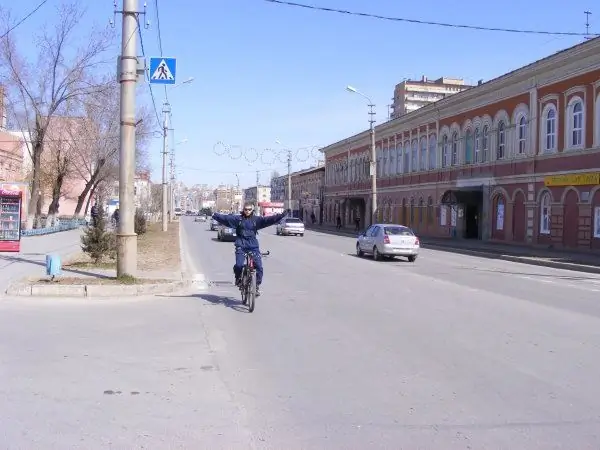For pastels, artists use special paper. It has a special serrated texture to retain the smallest particles of paint. This allows the soft pastels to be overlaid in layers. If you easily run the pastel stick over colored paper, the color in which it is painted will show through the paint. This creates interesting color effects.

It is necessary
A sheet of white paper for pastels, fixative, pastel paints
Instructions
Step 1
Sketch out the composition. Sketch the main elements of the composition with medium vandeyck brown paint. Its deep tone will contrast nicely with the neutral gray tone of the paper. Include human figures in your sketch. Use light diagonal strokes to outline the main shadows on the walls of the houses.
Step 2
Spread out color spots. Use the same loose wide strokes to mark the main color spots. Use medium burnt sienna and pale raw umber to outline at home. Paint the main foliage spots, the road and the most shaded areas with cold medium Prussian blue. At this stage of the work, it is better to write not with the tip of the pastel, but with the wide side of the stick.
Step 3
Blend the shadows. Shade the shaded side of the house on the right with medium Prussian blue. Brighten up the color of the houses on the opposite side of the street with quick, thick strokes of vibrant medium purple paint. Rub the applied paint with your finger to create an area of even, dense color.
Step 4
Paint a bright sky. Add touches of medium burnt sienna to the walls of the houses. Then write with the side of the pale azure stick the part of the sky visible in the gap between the houses.
Step 5
Indicate sunlight. The walls of individual houses are bathed in warm pink sunlight. Paint this light with very pale scarlet paint, applying it in broad strokes with the side of a pastel stick. Paint the potted plants with vigorous strokes of deep dark green paint.
Step 6
Boost your tone. Now turn up the tone. Apply dabs of deep purple paint to the plants on the left and to the inside of the balcony slab. Examine the entire painting with a critical eye. Touch up any color spots that seem too pale or too ramped up to you.
Step 7
Add details. Use charcoal gray to add architectural details to the houses on the right side of the street. Paint the sunlit roof tiles with clear strokes of medium orange cadmium.
Step 8
Write asphalt. Use gray pastels to paint the individual bricks on the road.






